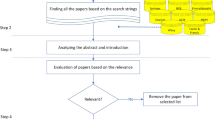Abstract
Existing approaches, such as semantic content-based or Collaborative Filtering-based recommendations, fail to exploit social aspects of services because services lack social relationships and do not consider social influence. In this paper, we propose a methodology for connecting distributed services in a global social service network (GSSN) to facilitate discovering internal social relationship for social influence-aware service recommendation. First, we propose a novel platform for constructing a GSSN by linking distributed services with social links based on quality of social link. We then propose a flexible model of the effective awareness of social influence, which provides a quantitative measure of the strength of influence between services. Next, a novel social influence-aware service recommendation approach is proposed based on GSSN using internal social relationship among services. The experimental results demonstrated that our new approach can solve the service recommendation problem with a low usage threshold and high accuracy, where the user preferences are exploited by a recommend-as-you-go method.






Similar content being viewed by others
References
Albert R, Barabási A (2000) Topology of evolving networks: local events and universality. Phys Rev Lett 85:5234–5237
Barabási A, Albert R (1999) Emergence of scaling in random networks. Science 286:509–512
Bianconi G (2001) Competition and multiscaling in evolving networks. Europhys Lett 54:436–442
Bianconi G, Barabási A-L (2001) Bose–Einstein condensation in complex networks. Phys Rev Lett 86(24):5632–5635
Bizer C, Heath T, Lee TB (2009) Linked data—the story so far. J Semant Web Inf 5(3):1–22
Chen X, Liu X, Huang Z, Sun H (2010) RegionKNN: a scalable hybrid collaborative filtering algorithm for personalized Web service recommendation. In Proc. 8th Int’l Conf. Web Services (ICWS’10), pp. 9–16
Chen W, Paik I, Hung PCK (2015) Constructing a global social service network for better quality of web service discovery. IEEE Trans Serv Comput 8(2):284–298
Christakis NA, Fowler JH (2007) The spread of obesity in a large social network over 32 years. N Engl J Med 375(4):370–379
Dong Y, Tang J, Wu S, Tian J, Chawla NV, Rao J, Cao H (2012) Link prediction and recommendation across heterogeneous social networks. In Proc. ICDM, pp.181–190
Jiang Y, Liu J, Tang M, Liu X (2011) An effective Web service recommendation based on personalized collaborative filtering. In Proc. 11th Int’l Conf. Web Services (ICWS’11), pp. 211–218
Klusch M, Fries B, Sycara K (2006) Automated semantic web service discovery with OWLS-MX. Proc. 15th IEEE Int’l Autonomous agents and multiagent systems Conf, pp.915–922
Kschischang FR, Frey BJ, Loeliger HA (2001) Factor graphs and the sum-product algorithm. IEEE Trans Inf Theory, pp. 498–519
Lecue F (2010) Combining collaborative filtering and semantic content-based approaches to recommend web services. In Proc. Int’l Conf. Semantic Computing, pp. 200–205
Lecue F, Mehandjiev N (2011) Seeking quality of Web service composition in a semantic dimension. IEEE Trans Knowl Data Eng 23(6):942–959
Lee YJ, Kim CS (2009) A learning ontology method for RESTful semantic Web services. In Proc. 7th Int’l Conf. Web Services (ICWS’09)
Maamar Z, Bispo dos Santos P, Krug Wives L, Badr Y, Faci N, Palazzo Moreira de Oliveira J (2011) Using social networks for Web services discovery. IEEE Internet Comput 15(4):48–54
Maamar Z, Faci N, Badr Y, Krug Wives L, Bispo dos Santos P, Benslimane D, Palazzo Moreira de Oliveira J (2011) Towards a framework for weaving social networks principles into web services discovery. 11th Annual Intl Conf. on New Technologies of Distributed Systems (NOTERE), pp. 9–13
Maamar Z, Hacid H, Huhns MN (2011) Why Web services need social networks. IEEE Internet Comput 15(2):90–94
Paolucci M, Kawamura T, PayneTR, Sycara K (2002) Semantic matching of Web services capabilities. In Proc. of the 1st Int’l Semantic Web Conf, pp. 333–347
Pedrinaci C, Domingue J (2010) Toward the next wave of services: linked services for the Web of data. J Univ Comput Sci 16(13):1694–1719
Shao L, Zhang J, Wei Y, Zhao J, Xie B, Mei H (2007) Personalized QoS prediction for web services via collaborative filtering. In Proc. 5th Int’l Conf. Web Services (ICWS’07), pp. 439–446
Tan W, Zhang J, Madduri R, Foster I, De Roure D, Goble C (2011) Providing map and GPS assistance to service composition in bioinformatics. IEEE Intl Conf Serv Comput
Tang J, Sun J, Wang C, Yang Z (2009) Social influence analysis in large-scale networks. KDD’09, pp. 807–816
Wang G, Xu D, Qi Y, Hou D (2008) A semantic match algorithm for Web services based on improved semantic distance. Proc. 4th Int’l Conf. Next Generation Web Service Practices
Wang FY, Zeng D, Carley KM, Mao W (2007) Social computing: from social informatics to social intelligence. IEEE Intell Syst 22(2):79–83
Wu J, Chen L, Feng Y, Zheng Z, Zhou M, Wu Z (2013) Predicting quality of service for selection by neighborhood-based collaborative filtering. IEEE Trans Syst Man Cybern Syst 43(2):428–439
Xia H, Yoshida T (2007) Web service recommendation with ontology-based similarity measure. In Proc. Int’l Conf. Innovative Computing, Information and Control. pp. 412–415, doi: 10.1109/ICICIC.2007.620
Xiong H, Vaidya J, Shafiq B, Paliwal AV, Adam N (2012) Semantics-based automated service discovery. IEEE Trans Serv Comput 5(2):260–275
Zhang J, Tan W, Alexander J, Foster I, Madduri R (2011) Recommend-as-you-go: a novel approach supporting services-oriented scientific workflow reuse. IEEE Intl Conf Serv Comput
Zheng Z, Ma H, Lyu MR, King I (2013) Collaborative Web service QoS prediction via neighborhood integrated matrix factorization. IEEE Trans Serv Comput 6(3):289–299
Zheng Z, Ma H, Lyu MR, King I (2011) QoS-aware Web service recommendation by collaborative filtering. IEEE Trans Serv Comput 4(2):140–152
Author information
Authors and Affiliations
Corresponding author
Rights and permissions
About this article
Cite this article
Chen, W., Paik, I. & Yen, N.Y. Discovering internal social relationship for influence-aware service recommendation. Multimed Tools Appl 76, 18193–18220 (2017). https://doi.org/10.1007/s11042-016-3437-8
Received:
Revised:
Accepted:
Published:
Issue Date:
DOI: https://doi.org/10.1007/s11042-016-3437-8




